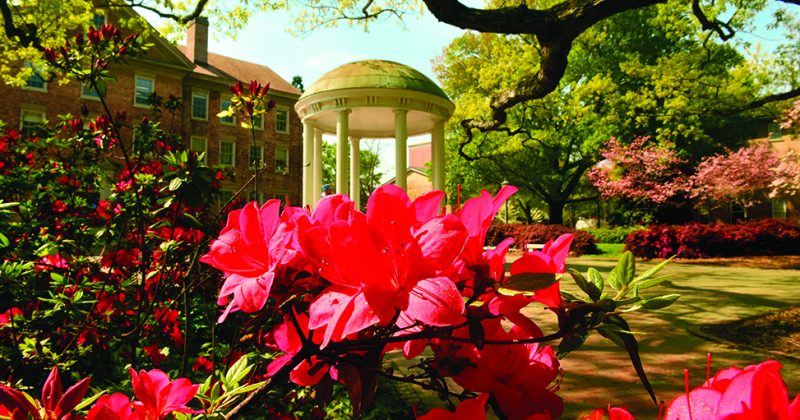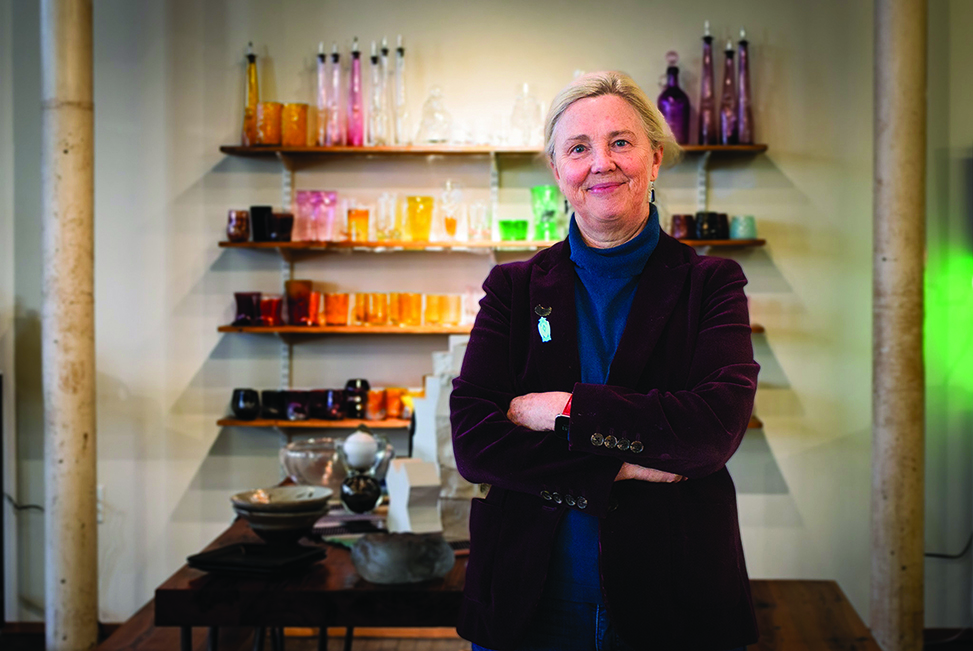
A Carolina alumna has sparked a successful economic revitalization effort in Star, North Carolina, by transforming an old textile mill into an arts and small business incubator.
Nancy Gottovi, surrounded by a kaleidoscope of glasswork in yellows, pinks, purples and greens, tells visitors: “We like to set stuff on fire around here.”
Gottovi is executive director of the Starworks Center for Creative Enterprise, a nonprofit hub for local and global artists working in ceramics, metal and glass, which are sometimes called “the fire arts.” Gottovi has been working on this economic revitalization project in earnest for the past 18 years in Star, a town of about 800 people in the exact geographic center of the state. (A sign above the entrance of the small downtown library boasts of this fact, backed by longitudinal and latitudinal data from the U.S. Army Corps of Engineers.)
Gottovi is standing in the middle of the School House Gallery, the public entrance of Starworks, where the art on display is for sale. In 1910, the building housed the Carolina Collegiate and Agricultural Institute, then later multiple textile manufacturers before the final one closed shop in the early 2000s.
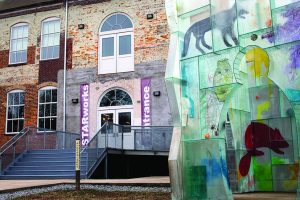
Gottovi has been setting the town on fire, too. A local businessman donated the approximately 200,000-square-foot building to Gottovi’s nonprofit in late 2004 with one request: “If I give it to you, will you do something good for the community?”
“I fell in love with the space the first time I saw it. I thought, ‘Well, with 2.5 staff members, this is a little more than we need, but everybody gets a corner office,’” Gottovi said, chuckling. The Wilmington native is a triple UNC-Chapel Hill degree-holder, receiving a B.A. in English in 1982 and a master’s and Ph.D. in cultural anthropology in 1992 and 1998, respectively.
After taking her nonprofit board of directors on a tour of the old mill, Gottovi waited for their reaction.
“I thought, ‘They’re going to walk in and take one look at this huge, leaky building with no heat and electricity and say, ‘Nancy, are you crazy?’” she said. “But every single one of them said, ‘I think we should try it.’”
Current board member Russell Hollers III said Gottovi wears many hats as the leader of this creative enterprise — industrial property manager, fundraiser, grant proposal writer, community-builder, entrepreneur and problem-solver — illustrating “the power of a liberal arts education.” He is also a Carolina alumnus (B.A. history ’87, J.D. ’92); he grew up in the area and returned home after finishing law school.
“Starworks is the perfect place for realizing that vision of how to keep small towns vibrant,” said Hollers, who enjoys conversing with community members and artists at the monthly “Hot Glass, Cold Beer” events, where artists showcase their work and attendees can enjoy beverages in the onsite taproom/coffee shop. “We’re trying to make sure we sustain this.”
Wild ideas and wild clay
 Nancy Gottovi takes a pot from the shelf and describes its unique colors and textures, explaining that the vessel was fired on its side. (photo by Jess Abel)
Nancy Gottovi takes a pot from the shelf and describes its unique colors and textures, explaining that the vessel was fired on its side. (photo by Jess Abel)
When Gottovi first inherited the building, she thought that a clay manufacturing business would be a good fit. The long-standing Seagrove pottery community is only about 10 miles away, but no one locally was sourcing indigenous clay from North Carolina’s rich soils to produce a finished product for sale. Depending on the chemistry of the clay, it can be adapted to make the perfect medium for potters.
Serendipity would lead her to a business partner who could help her do just that.
At an American Anthropological Association meeting in Boston, Gottovi reconnected with ceramic artist Takuro Shibata, whom she had met briefly when spending time in Shigaraki, Japan, after completing her doctoral dissertation.
“When I read Takuro’s resume, I saw that he was also a ceramics materials engineer and had been working at one of the biggest clay companies in Japan,” she said. “Shortly thereafter, he and his wife, Hitomi, also a ceramic artist, sold all their worldly possessions and arrived in the U.S. with their suitcases, boxes and a cat. I picked them up at the Greensboro airport, gave Takuro 14,000 square feet of space and a laptop, and said, ‘Start up a business.’ And he did.”
The Shibatas recently published a book, Wild Clay: Creating Ceramics and Glazes from Natural and Found Resources. “I think years from now
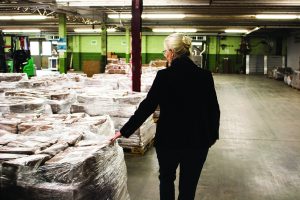
when people are writing about American pottery, they will be writing about Takuro Shibata,” Gottovi said.
She points to clear tubes on the wall that contain samples of North Carolina clay, which is, surprisingly, not just muddy red but purple and black, too.
“It’s a material that is literally underneath our feet. It’s also just amazing clay. Remember the time you tasted really good bread, full of texture and color? That is like Starworks clay,” she said. “We make clay for people who care about clay.”
Gottovi also attracted a manufacturing business, Wet Dog Glass, that makes high-end glassmaking equipment for artists. Eddie Bernard and his wife, Angela, fled New Orleans after Hurricane Katrina and revived their business at Starworks. It has been so successful that they have outgrown their space in Star and will be moving to a larger facility in Greensboro sometime this year.
How does Gottovi describe Starworks to an outsider? It is a haven for manufacturers as well as makers, holding artists’ residencies and internships in glass and ceramics; metalworking residencies will begin this year.
“I like to use the term ‘creative work community’,” she said. “One of the things I want people to realize is that they may see all these artists in here working and listening to rock ’n’ roll and making amazing things, but this is work. People are doing this to make a living.”
Art and science
 From left, artist Emily Tischler, glass director Joe Grant and Megan Lange in the Starworks hot shop. (photo by Jess Abel)
From left, artist Emily Tischler, glass director Joe Grant and Megan Lange in the Starworks hot shop. (photo by Jess Abel)
In the hot shop, the smell of fire is in the air. Glass director Joe Grant takes a hollow steel pipe and pokes it into a furnace where the temperature is about 2,100 degrees and the molten glass is “the viscosity of honey.”
“That’s called ‘the gather,’ when we wind the glass onto the end of the rod,” he said. “From that point forward, we’re always turning. Turning becomes like breathing in the hot shop, because once you remove that glass from its heat source, you have a limited amount of time to shape it before it cools down and becomes rigid.”
Glassmaking is an art, but it’s also a science — physics and chemistry and timing and temperature. Grant, who first came to Starworks as an artist-in-residence in 2013 before becoming glass director in 2014, talked about the relationship of science to art in a new book published by UNC Press, Art of the State: Celebrating the Visual Art of North Carolina. “Art has a wider vocabulary with which to interpret nature … there is room for mysticism, transcendence, intuition, hybridization, feeling and emotion in art,” he wrote.
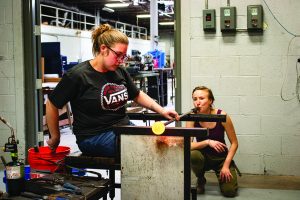
Grant and emerging artist Janey Hollis create an almost balletic dance of twisting steel rods with hot glass, rolling the glowing orbs on a steel table called a marver and then returning them time and again to reheating chambers to keep the glass pliable. Grant stresses that glassblowing is also about teamwork. He blows into the end of the rod to create a glass bubble, to which Hollis adds a chunk of transparent orange. They’re working on a sculpture for the Hospice of the Piedmont.
“That’s one of the things that drew me to becoming a glassmaker — the camaraderie that happens in the studio, working in tandem with team members who understand the language and can choreograph themselves to be in the exact place at the right time to make magic happen,” Grant said.
Grant said his creative energy is also fueled by the visiting artists who come to Starworks. The current artist-in-residence is from Dublin, Ireland. There are interns from Poland and California. Workshops and festivals invite the public into the artists’ studios. Teens from Eckerd Connects, a juvenile justice residential academy about seven miles down the road, are invited to Starworks a couple of times each week to learn about glassblowing and teamwork and communication.
Grant praises Gottovi for being unafraid to try new things, even if she fails.
“That’s a huge part of her leadership, as well as the trust and faith she puts into her staff. She recognizes that having the right people in place allows us to become better all the time,” he said. “Starworks makes me feel like anything is possible.”
Creativity and community
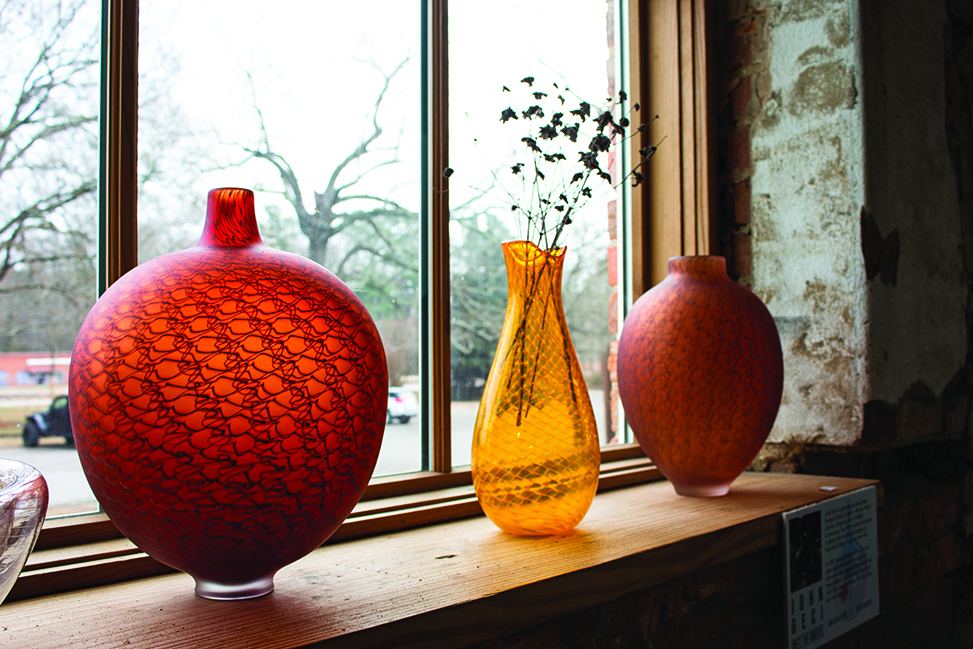 Glass vases reflect the sun in a window in the School House Gallery. Gottovi calls Starworks a “creative work community [that] focuses on the care and feeding of artists.” (photo by Jess Abel)
Glass vases reflect the sun in a window in the School House Gallery. Gottovi calls Starworks a “creative work community [that] focuses on the care and feeding of artists.” (photo by Jess Abel)
UNC anthropologist Rudi Colloredo-Mansfeld, former senior associate dean of social sciences and global programs in the College of Arts and Sciences, took a delegation of artists from Ecuador and Mexico to visit Starworks in 2017. Colloredo-Mansfeld, who studies global artisan economies, and a colleague soon invited Gottovi to speak at an international conference in Puebla, Mexico.
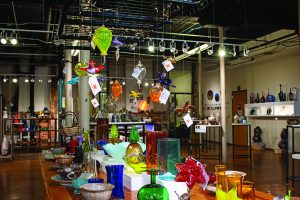
Colloredo-Mansfeld asked Gottovi to share her experience in a chapter for a book on economic revitalization in the Americas, written in Spanish, which translated is “Industrial Abandonment, Economic Trauma and the Rise of a New Model of Development of a Creative Economy.”
He said Gottovi may joke about being lucky and in the right place at the right time, but “she’s worked very hard to make that luck stick.”
“Starworks has become a place that learns about the global even as it focuses on the local,” Colloredo-Mansfeld said. “There’s always a new experiment being launched there. It is a strikingly creative space. And they are still inventing.”
In addition to creating art, Starworks creates community.
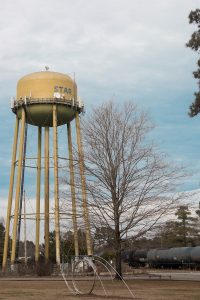 “Factories brought together people from different backgrounds, working together. It was a community,” Gottovi said. “When these factories leave town, there is nothing left to replace that. The very social fabric is rendered.” (photo of Star water tower by Jess Abel)
“Factories brought together people from different backgrounds, working together. It was a community,” Gottovi said. “When these factories leave town, there is nothing left to replace that. The very social fabric is rendered.” (photo of Star water tower by Jess Abel)
The dog-friendly Starworks Café and Taproom hosts trivia and game nights, yoga, live music, open mic events, a running club and artist talks. (Gottovi brags that her own trivia team, even though sometimes pitted against a group of schoolteachers, is quite good).
A current focus for Gottovi is finding lodging for guest artists to stay, a challenge in a small town. Plans are underway to renovate the adjacent former boiler building into artist housing, featuring 10 guest rooms, five ensuite bathrooms and a shared living space and community kitchen.
“After a few years, I realized we were basically taking this building back to what it was before. It was a school. I learned there used to be dormitories in the back of the building, then they were torn down. Here we are essentially building ‘dormitories’ again,” she said.
Education is a thread that runs throughout the enterprise. Every year, local elementary school kids are invited to create an original design on paper and write a few sentences about it. Their drawings are displayed on one wall of a large exhibition space on the other side of the café. A winner is chosen from the submissions, and the Starworks glass artists bring the child’s vision to life, where it is showcased at a spring festival called Firefest. Gottovi points to one young artist who wrote: “There is just so much hate in the world. We need more love.”
Gottovi said people often ask how she uses an anthropology lens in her work. Anthropology, she says, is the study of human change across time and space. Communities like Star have gone through massive change.
“What was once a farming community became a railroad town, then a factory town. And it’s none of those things anymore. So, for a town like Star, what is its reason for being?” she asked.
“One thing I’ve learned more than anything is that economic development looks very different in small communities,” she said. It may not be an official part of the nonprofit’s mission statement, but Gottovi is indeed fulfilling the elementary school artist’s young wish — spreading a little love in her own backyard.
“Today, Starworks has become a place where people can come together and be in an environment that promotes creativity and discussion and possibility. … Everybody who works here is so creative and smart and committed. That’s what brings me joy.”
Learn more at www.starworksnc.org.
Watch glass artists in action at a “Hot Glass, Cold Beer” event.
By Kim Weaver Spurr ’88, photos by Jess Abel ’19
Published in the Spring 2023 issue | Features
Read More
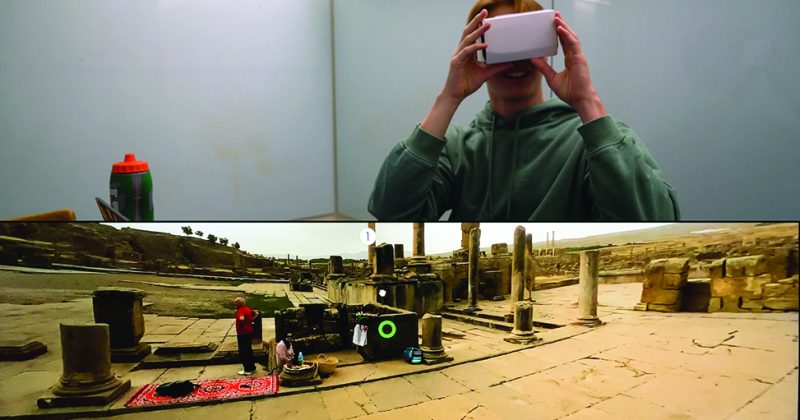
Tar Heels build language confidence with virtual reality
Tar Heels in Caroline Sibley’s Advanced Arabic class use virtual…
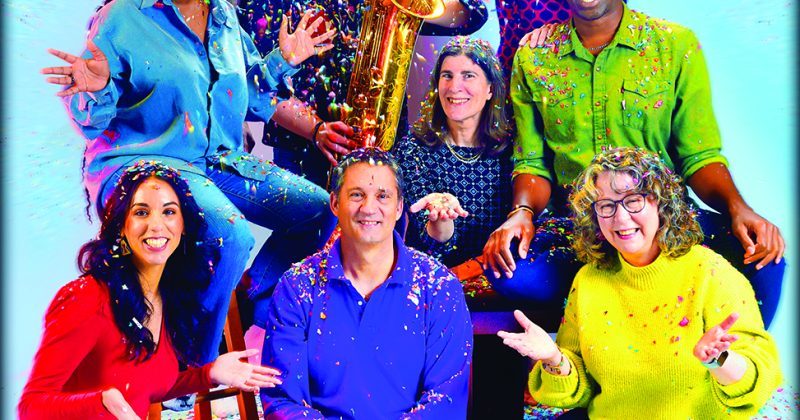
Campaign for Carolina: Investing in People
The Campaign for Carolina wrapped up in December having raised…


